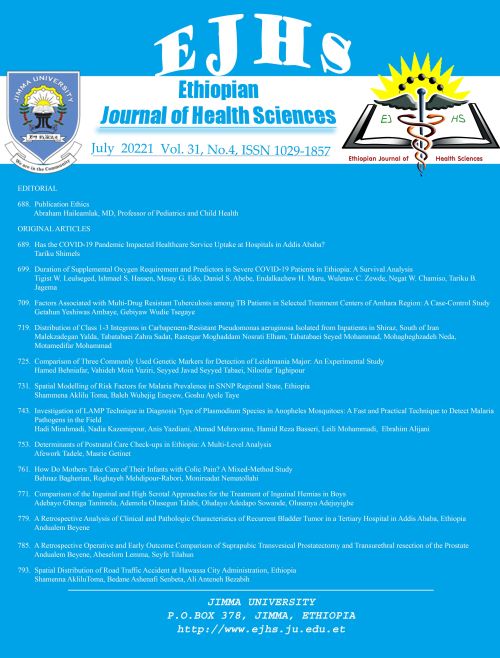Main Article Content
Spatial Modelling of Risk Factors for Malaria Prevalence in SNNP Regional State, Ethiopia
Abstract
BACKGROUND፡ Malaria is one of the most severe public health problems worldwide with 300 to 500 million cases and about one million deaths reported to date of which 90% were from world health organization (WHO) Sub Saharan Africa (SSA) countries. The purpose of this study was to explore the spatial distribution of malaria parasite prevalence (MPP) among districts of Southern Nations Nationalities and Peoples Regional State (SNNRS) in Ethiopia by using 2011 malaria indicator survey (MIS) data collected for 76 districts and to model its relationship with different covariates.
METHOD: Exploratory spatial data analysis (ESDA) was conducted followed by implementation of spatial lag model (SLM) and spatial error model (SEM) in GeoDa software. Queen contiguity second order type of spatial weight matrix was applied in order to formalize spatial interaction among districts.
Results: From ESDA, we found positive spatial autocorrelation in malaria prevalence rate. Hot spot areas for MPP were found in the eastern and southeast parts of the region. Relying on specification diagnostics and measures of fit, SLM was found to be the best model for explaining the geographical variation of MPP. SLM analysis demonstrated that proportion of households iving in earth/local dung plastered floor house, proportion of households living under thatched roof house, average number of rooms/person in a given district, proportion of households who used anti-malaria spray in the last 12 months before the survey, percentage household using mosquito nets and average number of mosquito nets/person in a given district have positive and statistically significant effect on spatial distribution of MPP across districts of SNNPRS. Percentage of households living without access to radio and television has negative and statistically significant effect on spatial distribution of MPP across districts of MPP.
CONCLUSION: Malaria is spatially clustered in space. The implication of the spatial clustering is that, in cases where the decisions on how to allocate funds for interventions needs to have spatial dimension.






